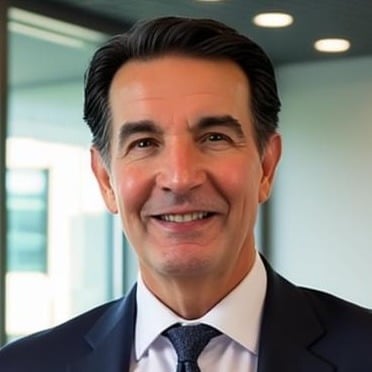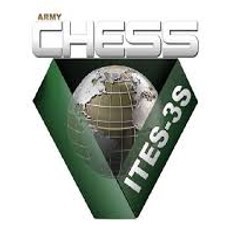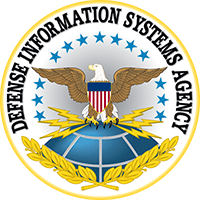Many organizations have completed or are going through an IT Modernization initiative. Many more organizations have yet to move forward. This post is for organizations considering or on the precipice of moving forward with IT Modernization that need to bolster their business case.
IT Modernization is one of the three core pillars, along with Strategy Execution and Business Process Re-engineering, that comprise business transformation. Business transformation is driven by business strategy, which is an organization’s recognition (or anticipation) and plan to engage shifts in the marketplace and underlying business drivers.
Execution of business strategy is realized through transformative Business Process Re-engineering. IT Modernization provides the technical platform to support and enable the re-engineering of business processes.
What is IT Modernization?
IT Modernization represents transformative changes in IT infrastructure, applications, services, and customer support that enables the re-engineering of business processes that support business strategy. These new processes enable an organization to do new things in new ways – digital transformation, big data, process/workflow automation, etc. – and to become more effective, efficient and agile.
Netflix is an excellent example. Netflix’s original business model was based on sending DVDs to subscribers via mail. Netflix created a basic web-based front end for customers to place orders and manage their account. The backend fulfillment processes were supported by traditional information systems. The IT platform was sufficient to support the DVD via mail business model. However, Netflix’s business strategy continued to evolve and the next major transformation was from DVDs via mail to content streaming - a significant change in their business model.
A content streaming business model required a fundamental shift in external and internal business processes - customer engagement, fulfillment, customer support, vendor (content provider) engagement, payment processing, revenue accounting, etc. Supporting these sophisticated and highly integrated business processes required significant modernization of Netflix’s information technology platform. Netflix continues to evolve their business model – and the current shift includes content development – which requires additional transformation of business processes and supporting IT infrastructure and systems.
In other words, IT Modernization is strategic, not simply tactical. The distinction is important. Tactical changes in IT represent incremental business-as-usual changes to support the current business model and strategies. To be clear, ongoing incremental tactical changes are important to maintain the status quo. However, tactical changes do not enable organizations to execute transformational business strategies that are dependent on new business processes to do new things in new ways. IT Modernization is essential to this transformation.
Benefits of IT Modernization
The overarching benefit/driver of IT Modernization is providing the platform to transform business processes that enable the execution of business strategy. This enables an organization to become more effective in creating customer value (resulting in increased revenue, customer satisfaction, etc.) and more efficient in its operations (reducing the cost of business operations while improving and delivering more customer value). The Netflix discussion above is an excellent example.
In my book Mastering Business Chaos, and in a number of my white papers, I discuss the concept of analyzing work activities to separate rules-based components of the work from knowledge and judgment-based components of the work. The concept of process automation utilizes information technology to automate the rules-based components of the work.
Process automation can be accomplished with a hybrid mix of options, such as:
- The application of rules-based workflow routing;
- Robotic Process Automation (RPA) – automating repetitive tasks in interacting with application software traditionally performed by end users;
- Intelligent decision making (AI/machine learning) – using data patterns to make/recommend decision; or as I like to say, “tee-up” decisions for decision makers.
I will go into each of these process automation approaches in more detail in an upcoming blog post. The key take-away is that to achieve this level of productivity and organization efficiency the process requires a sophisticated, modernized IT platform.
Digital transformation is also dependent on IT Modernization. Digital transformation, like process automation above, is a subset and initiative associated with Business Process Re-engineering. Digital transformation involves analyzing an organization’s processes, internal and external customer transactions and interactions, information stores and repositories, etc. and, where applicable, converting from its current analog state to a digital approach. Insurance policy processing, claims processing, loan processing, procurement, content streaming (the Netflix example above), etc. are all example of transitioning from an analog or physical form to a digital form of transactions and interactions among and between internal and external customers.
IT itself is a beneficiary of IT Modernization. IT is continually challenged to provide better services at lower costs. IT Modernization is not only about newer and better technology, IT Modernization is also about re-engineering IT processes. DevOps (Software Development tightly integrated with Software Operations) is a great example. DevOps applies automation and monitoring processes to the software development lifecycle from requirements, coding, integration, testing, to configuration, deployment, and break-fix. The goal is better integration with business needs, shorter development cycles, increased deployment frequency, and the release of high-quality functionality.
DevOps is just one of many enhancements to IT via IT Modernization. The concept of IT process re-engineering applies across the entire IT domain from infrastructure to the full range of IT service delivery. IT Modernization enables the IT organization to be more agile, scalable, innovative, and cost-effective in providing higher-quality, higher-value IT services.
Conclusion
IT leadership and management is aware - often acutely aware - that legacy infrastructure and incumbent systems are not sufficiently sophisticated, agile and scalable to enable transformative re-engineering of business processes necessary to support continually evolving business strategies. They are also aware that the current state of internal IT processes are not sufficiently sophisticated, agile and scalable as well. However, I fully understand their dilemma of balancing the day-to-day firefights of IT with managing significant change to the IT organization.
My clients frequently ask about the risks of moving forward with IT Modernization. And, clearly, there are risks. However, for the most part, the risks are standard business risks consistent with any initiative – time, budget, deliverables/outcomes, change management, etc. The real risk, however, is maintaining the status quo – not moving forward with IT Modernization. That is an existential risk. If an organization does not modernize IT, then the organization cannot move forward with transformative Business Process Re-engineering; and if an organization cannot move forward with transformative Business Process Re-engineering, it cannot execute its business strategy!
The world is rapidly changing – customer and marketplace requirements are changing, regulations are changing, technology is changing – and if an organization continues to stay in a safe harbor and maintain the status quo, then the gap between what the organization is currently doing - the current “as-is” state and what the organization needs to be doing going forward into the future state – continually widens to the point where the organization and its products and services become irrelevant in the marketplace.
My point is that the biggest risk is doing nothing – maintaining the status quo. And perhaps the biggest myth regarding maintaining the status quo is this: “we will make the transition as soon as things get back to normal.” There is no getting back to normal. Rapid, unrelenting change is the norm!
IT Modernization is just one step in the process of business transformation. To truly enact business transformation at an enterprise level, you must always include another crucial element in the process - Business Process Re-engineering.
Subscribe to my blog | Visit our Knowledge Hub
Visit my YouTube channel | Connect with me on LinkedIn
Check out our Business Analysis Training Courses and Consulting Services




















